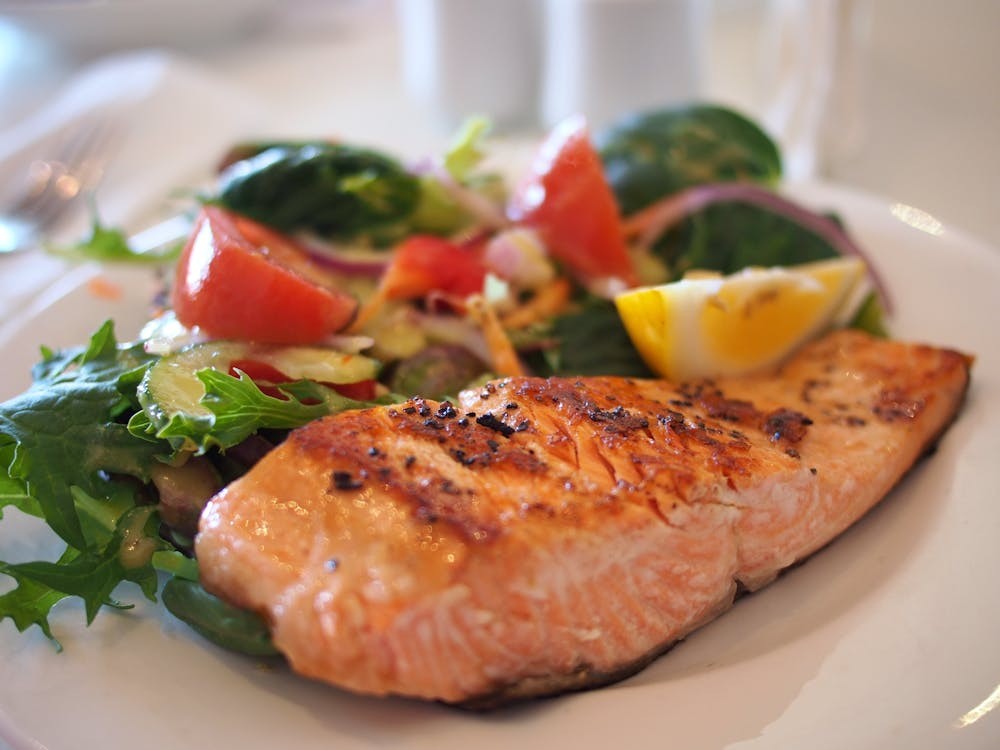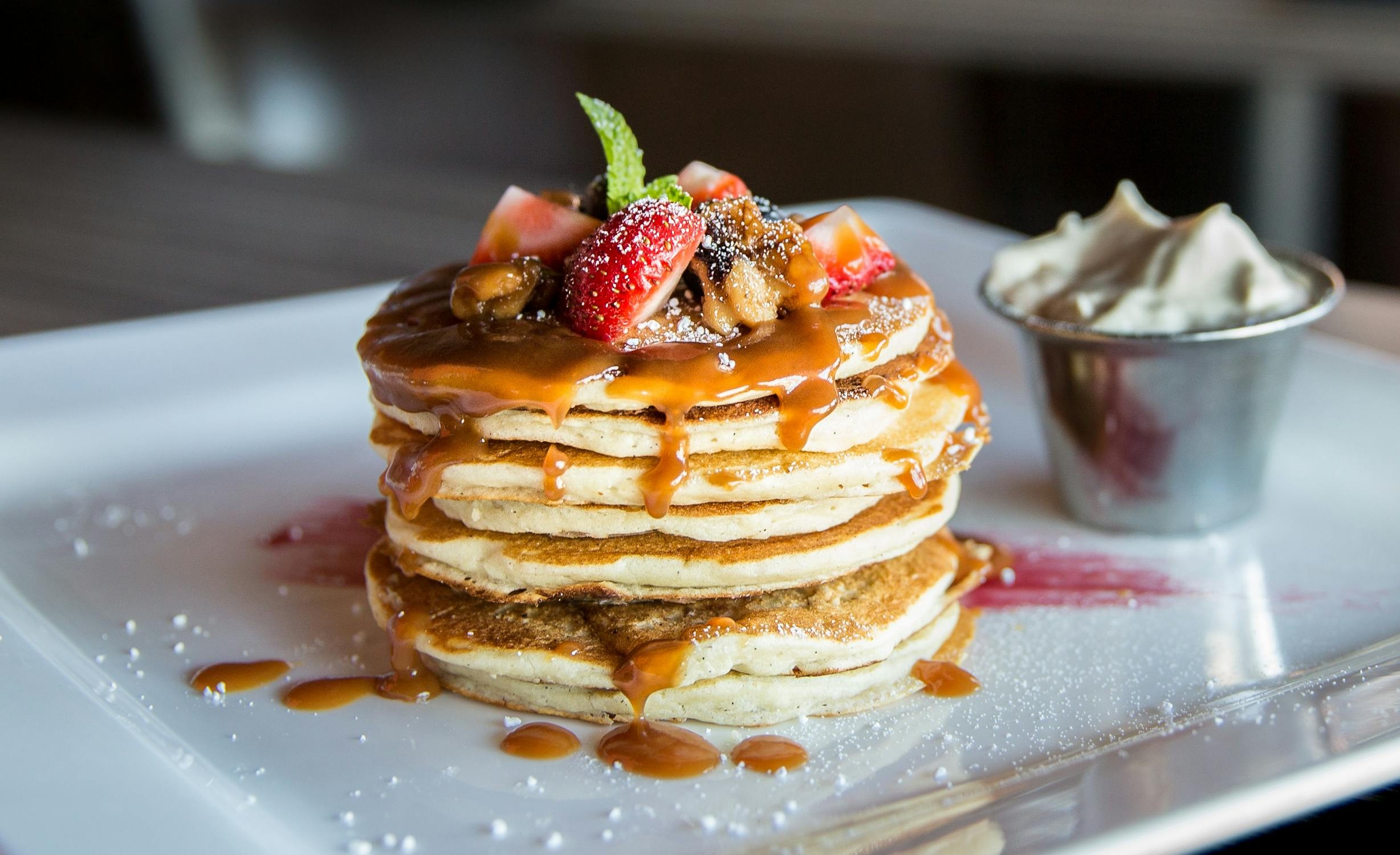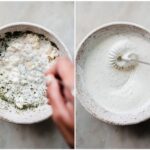What Food Can You Eat With Braces? Discover delightful and nutritious food options perfect for individuals with braces while maintaining optimal oral health. FOODS.EDU.VN is dedicated to providing you with expert insights and solutions, guaranteeing that your journey with orthodontic appliances is both pleasant and delicious. Uncover the ideal braces-friendly diet plan, learn about orthodontic-friendly meals, and explore delicious, braces-approved snacks to keep your taste buds happy and your teeth healthy with our comprehensive guide.
1. Understanding Dietary Adjustments with Braces
Embarking on orthodontic treatment with braces often requires adjustments to your diet. These adjustments are necessary to protect your braces and maintain good oral hygiene throughout the treatment. Understanding what you can and cannot eat is crucial for a successful and comfortable experience.
1.1 Why Dietary Restrictions are Necessary
Dietary restrictions are a vital part of braces treatment for several reasons:
- Preventing Damage: Hard, sticky, or chewy foods can damage or break the brackets and wires of your braces, leading to additional orthodontic visits and potentially extending your treatment time.
- Avoiding Discomfort: Certain foods can cause discomfort or pain, especially during the initial adjustment period after getting braces or after adjustments.
- Maintaining Oral Hygiene: Food particles can easily get trapped around brackets and wires, increasing the risk of plaque buildup, cavities, and gum disease. Avoiding certain foods can simplify your oral hygiene routine.
According to the American Association of Orthodontists (AAO), following your orthodontist’s dietary guidelines can significantly impact the success and duration of your treatment.
1.2 Initial Discomfort and Dietary Changes
When you first get braces, it’s common to experience some tenderness or discomfort. During this initial period, sticking to a soft-food diet is highly recommended. This helps minimize irritation and allows your mouth to adjust to the new appliances.
- First Few Days: Focus on liquids and very soft foods like soups, yogurt, smoothies, and mashed potatoes.
- First Week: Gradually introduce slightly more solid foods as your comfort level increases.
- Ongoing Adjustments: Be mindful of your teeth’s sensitivity after each adjustment appointment and modify your diet accordingly.
Choosing the right foods can ease discomfort and ensure you’re still getting proper nutrition.
2. Braces-Friendly Foods: A Comprehensive List
Navigating the world of food with braces doesn’t have to be daunting. There are plenty of delicious and nutritious options that are safe to eat and won’t damage your appliances. Here’s a comprehensive list of braces-friendly foods to incorporate into your diet:
2.1 Soft Fruits
Soft fruits are an excellent choice for individuals with braces. They are easy to chew, provide essential vitamins, and are gentle on your teeth.
| Fruit | Preparation Tips | Nutritional Benefits |
|---|---|---|
| Bananas | Eat as is or blend into smoothies. | Rich in potassium and fiber. |
| Berries | Choose blueberries, raspberries, and strawberries. Make sure to rinse well to remove seeds that may get caught in braces. | High in antioxidants and vitamins. |
| Melons | Watermelon, cantaloupe, and honeydew are soft and refreshing. | Good source of hydration and vitamins A and C. |
| Kiwi | Soft and easy to eat when ripe. | High in vitamin C and dietary fiber. |
| Grapes | Seedless grapes are best. | Provides antioxidants and vitamins K and B. |
| Peaches | Ensure they are ripe and soft. | Good source of vitamins A and C. |
| Cooked Apples/Pears | Peel, core, and cook until soft. | Easier to chew and digest. |





Alt text: Close-up shot of ripe and soft peaches, a braces-friendly fruit rich in vitamins A and C, perfect for those undergoing orthodontic treatment.
2.2 Cooked Vegetables
Cooked vegetables are another great option, offering essential nutrients while being gentle on your braces.
| Vegetable | Preparation Tips | Nutritional Benefits |
|---|---|---|
| Mashed Potatoes | Add milk, butter, or broth for extra creaminess. | Excellent source of potassium and carbohydrates. |
| Steamed Spinach | Cook until tender. Can be added to smoothies or soups. | High in iron, calcium, and vitamins A and C. |
| Cooked Carrots | Steam, boil, or roast until soft. Cut into small pieces. | Good source of beta-carotene, which converts to vitamin A. |
| Cooked Green Beans | Steam or boil until tender. | Provides vitamins K and C, as well as fiber. |
| Soft-Cooked Broccoli | Steam or boil until tender. Cut into small pieces. | Contains vitamins C and K, and folate, promoting overall health. |
| Cooked Sweet Potatoes | Bake or boil until soft and easily mashed. | Rich in vitamin A and fiber, supporting healthy vision and digestion. |
| Cooked Zucchini | Steam or sauté until tender and easy to chew. | Provides vitamins B6 and C, essential for immune function and energy production. |
2.3 Dairy Products
Dairy products are not only soft and easy to eat but also provide essential calcium and protein for strong teeth and bones.
| Dairy Product | Preparation Tips | Nutritional Benefits |
|---|---|---|
| Yogurt | Choose plain or flavored yogurt. Avoid varieties with hard granola or candy mix-ins. | Excellent source of calcium, protein, and probiotics for gut health. |
| Soft Cheeses | Cottage cheese, ricotta cheese, and cream cheese are good options. | High in protein and calcium. |
| Pudding | Enjoy as a dessert or snack. | Provides calcium and can be a comforting treat. |
| Milk | Drink plain or flavored milk. | Excellent source of calcium and vitamin D. |
| Smoothies | Blend fruits, vegetables, yogurt, and milk for a nutritious and easy-to-consume meal. | Customizable to include a variety of nutrients. |
Alt text: A bowl of creamy yogurt topped with fresh berries, a braces-friendly snack packed with calcium, protein, and antioxidants, perfect for maintaining oral health during orthodontic treatment.
2.4 Grains
Grains can be a significant part of a braces-friendly diet as long as they are cooked until soft and easy to chew.
| Grain | Preparation Tips | Nutritional Benefits |
|---|---|---|
| Rice | Cook until soft and fluffy. | Provides carbohydrates for energy. Choose brown rice for added fiber. |
| Pasta | Cook until al dente or slightly softer. | Good source of carbohydrates. Opt for whole wheat pasta for additional fiber. |
| Noodles | Choose soft noodles like egg noodles or ramen. | Easy to chew and can be incorporated into soups or stir-fries. |
| Soft Bread | Opt for soft varieties like white bread, rolls, or tortillas. Avoid crusty or hard breads. | Provides carbohydrates for energy. |
| Oatmeal | Cook with water or milk until soft and creamy. | High in fiber and can help lower cholesterol. |
2.5 Proteins
Protein is essential for overall health, and there are plenty of braces-friendly options to choose from.
| Protein | Preparation Tips | Nutritional Benefits |
|---|---|---|
| Soft-Cooked Eggs | Scrambled, poached, or soft-boiled eggs are great choices. | Excellent source of protein and essential amino acids. |
| Fish | Choose soft, flaky fish like salmon, tuna, or cod. Make sure to remove all bones. | High in omega-3 fatty acids, which are beneficial for heart health. |
| Poultry | Cooked chicken or turkey should be shredded or cut into small pieces. Avoid crispy skin. | Lean source of protein. |
| Tofu | Soft or silken tofu is easy to eat and can be added to stir-fries or smoothies. | Plant-based protein source, rich in calcium and iron. |
| Cooked Beans | Lentils, black beans, and kidney beans should be cooked until soft. | Good source of protein and fiber. |
| Ground Meat | Lean ground beef or turkey can be easily incorporated into soft dishes like pasta sauces or soups. | Provides a good source of iron and essential nutrients for energy and muscle maintenance. |
Alt text: A grilled salmon fillet, a braces-friendly protein source rich in omega-3 fatty acids, promoting heart health and providing essential nutrients for individuals with orthodontic appliances.
2.6 Soups
Soups are a versatile and comforting option for individuals with braces, especially during the initial adjustment period.
| Soup Type | Ingredients | Nutritional Benefits |
|---|---|---|
| Creamy Soups | Tomato soup, cream of mushroom, or butternut squash soup. | Provides vitamins and minerals from the vegetables. |
| Broth-Based Soups | Chicken noodle soup, vegetable broth, or miso soup. | Hydrating and can provide essential electrolytes. |
| Pureed Soups | Potato soup, carrot soup, or sweet potato soup. | Easy to consume and packed with nutrients. |
| Hearty Soups | Lentil soup, black bean soup, or split pea soup (make sure beans and peas are very soft). | Provides protein and fiber, keeping you full and satisfied. |
2.7 Desserts
Satisfy your sweet cravings with these braces-friendly dessert options:
| Dessert | Preparation Tips | Nutritional Benefits |
|---|---|---|
| Ice Cream | Enjoy in moderation. Be mindful of sensitivity to cold. | Provides calcium. Opt for lower-sugar options. |
| Pudding | Choose soft, creamy puddings. | Can be a comforting treat. |
| Jell-O | Easy to eat and digest. | Low in calories. |
| Soft Cookies | Ensure cookies are soft and easy to chew. Avoid cookies with nuts. | Enjoy in moderation as a treat. |
3. Foods to Avoid with Braces
Knowing which foods to avoid is just as important as knowing what you can eat. Certain foods can damage your braces, cause discomfort, or make it difficult to maintain good oral hygiene.
3.1 Hard Foods
Hard foods can easily damage the brackets and wires of your braces, leading to costly repairs and extended treatment time.
| Food | Why to Avoid | Alternative |
|---|---|---|
| Nuts | Can break or dislodge brackets. | Nut butter (peanut butter, almond butter) in moderation, ensuring it doesn’t stick to the braces. |
| Hard Candies | Can break brackets and are high in sugar. | Sugar-free gum or soft candies that dissolve quickly. |
| Popcorn | Kernels can get stuck between teeth and braces, leading to irritation. | Cheese puffs or soft snack alternatives. |
| Ice | Chewing on ice can damage brackets and wires. | Avoid chewing ice. Opt for chilled drinks instead. |
| Hard Fruits | Apples, pears, and other hard fruits can damage brackets. | Cut into small, bite-sized pieces or cook until soft. |
| Hard Vegetables | Raw carrots, celery, and other hard vegetables can damage brackets. | Steam, boil, or roast until soft and easily chewed. |
Alt text: A bowl of popcorn, a food to avoid with braces due to the risk of kernels getting stuck and causing irritation, potentially damaging brackets and wires.
3.2 Sticky and Chewy Foods
Sticky and chewy foods can adhere to your braces, making them difficult to clean and potentially damaging the appliances.
| Food | Why to Avoid | Alternative |
|---|---|---|
| Chewing Gum | Can stick to brackets and wires, making it difficult to clean. | Sugar-free gum in moderation, ensuring it doesn’t stick to the braces. |
| Caramel | Very sticky and can pull off brackets. | Soft chocolate or pudding. |
| Taffy | Similar to caramel, very sticky and can damage braces. | Soft candies that dissolve quickly. |
| Chewy Candies | Starbursts, Skittles, and other chewy candies can get stuck in braces and are high in sugar. | Soft chocolate or sugar-free candies. |
| Licorice | Chewy and can stain teeth. | Avoid licorice. Opt for other soft treats. |
| Certain Breads | Bagels and hard rolls can be too chewy and difficult to manage with braces. | Opt for soft bread slices or tortillas. |
3.3 Sugary Foods and Drinks
Sugary foods and drinks can increase the risk of plaque buildup, cavities, and gum disease around your braces.
| Food/Drink | Why to Avoid | Alternative |
|---|---|---|
| Soda | High in sugar and acidic, which can erode tooth enamel. | Water, milk, or sugar-free beverages. |
| Fruit Juices | Can be high in sugar and acidic. | Diluted fruit juice or water. |
| Sports Drinks | Often high in sugar. | Water or low-sugar electrolyte drinks. |
| Candies | Increase the risk of cavities. | Sugar-free candies or soft chocolate in moderation. |
| Cakes and Pastries | Often high in sugar and can be difficult to clean around braces. | Enjoy in moderation. Choose soft varieties and brush thoroughly afterwards. |
| Processed Snacks | Many contain hidden sugars that can contribute to plaque formation. | Choose whole foods like fruits, vegetables, and dairy products to limit sugar intake. |
3.4 Other Foods to Be Cautious With
There are a few other foods that require special attention when you have braces:
| Food | Why to Be Cautious | Preparation Tips |
|---|---|---|
| Corn on the Cob | Difficult to eat without damaging brackets. | Cut the corn off the cob before eating. |
| Meat on the Bone | Can be challenging to eat neatly and may damage braces. | Remove the meat from the bone before eating. Choose boneless options. |
| Hard Crusts | Can be too hard and damage brackets. | Cut off the crust or choose soft bread. |
4. Meal Planning with Braces: Sample Meal Ideas
Creating a braces-friendly meal plan can be simple and enjoyable. Here are some sample meal ideas to get you started:
4.1 Breakfast
- Option 1: Oatmeal with soft fruits like bananas and berries.
- Option 2: Yogurt parfait with soft granola and chopped peaches.
- Option 3: Smoothie with spinach, banana, yogurt, and almond milk.
4.2 Lunch
- Option 1: Creamy tomato soup with a soft grilled cheese sandwich (made with soft bread).
- Option 2: Tuna salad (made with mayonnaise) on soft bread or lettuce wraps.
- Option 3: Pasta salad with cooked vegetables and a light vinaigrette dressing.
Alt text: A comforting bowl of creamy tomato soup served with a soft grilled cheese sandwich, a braces-friendly lunch option that is easy to chew and gentle on orthodontic appliances.
4.3 Dinner
- Option 1: Baked salmon with mashed sweet potatoes and steamed green beans.
- Option 2: Chicken stir-fry with soft rice noodles and cooked vegetables.
- Option 3: Lentil soup with a side of soft bread.
4.4 Snacks
- Option 1: Yogurt.
- Option 2: Soft fruit (banana, grapes, melon).
- Option 3: Cottage cheese.
- Option 4: Pudding.
- Option 5: Soft-baked cookies (in moderation).
5. Maintaining Oral Hygiene with Braces
Maintaining excellent oral hygiene is crucial when you have braces. Food particles can easily get trapped around the brackets and wires, increasing the risk of plaque buildup, cavities, and gum disease.
5.1 Brushing Techniques
- Frequency: Brush your teeth at least twice a day, ideally after every meal.
- Tools: Use a soft-bristled toothbrush and fluoride toothpaste.
- Technique:
- Brush around each bracket, making sure to clean above and below the wire.
- Use small, circular motions to remove plaque and food particles.
- Brush your tongue to remove bacteria and freshen your breath.
5.2 Flossing with Braces
Flossing can be challenging with braces, but it’s essential for removing plaque and food particles from between your teeth.
- Tools: Use waxed floss or floss threaders to navigate around the wires. Interdental brushes can also be helpful for cleaning between brackets.
- Technique:
- Thread the floss between the wire and your teeth.
- Gently slide the floss up and down along the sides of each tooth.
- Use a new section of floss for each tooth.
5.3 Rinsing with Mouthwash
Rinsing with a fluoride mouthwash can help kill bacteria, reduce plaque, and strengthen your tooth enamel.
- Frequency: Rinse once or twice a day, after brushing and flossing.
- Type: Choose a fluoride mouthwash recommended by your orthodontist.
- Technique: Swish the mouthwash around in your mouth for 30 seconds, then spit it out.
5.4 Regular Dental Check-Ups
Regular dental check-ups are essential for monitoring your oral health and ensuring that your braces are properly adjusted.
- Frequency: Follow your orthodontist’s recommendations for check-up appointments.
- Purpose:
- Your orthodontist will check the alignment of your teeth and adjust the wires as needed.
- They will also check for any signs of cavities, gum disease, or other oral health problems.
6. Recipes for Braces-Wearers: Delicious and Safe
Here are a couple of recipes that are both delicious and safe for individuals with braces:
6.1 Creamy Tomato Soup
Ingredients:
- 1 tablespoon olive oil
- 1 onion, chopped
- 2 cloves garlic, minced
- 28 ounces crushed tomatoes
- 14 ounces vegetable broth
- 1 teaspoon dried basil
- Salt and pepper to taste
- Heavy cream (optional)
Instructions:
- Heat olive oil in a large pot over medium heat.
- Add onion and garlic and cook until softened, about 5 minutes.
- Stir in crushed tomatoes, vegetable broth, and basil.
- Bring to a simmer and cook for 15-20 minutes.
- Use an immersion blender to puree the soup until smooth.
- Season with salt and pepper to taste.
- Stir in heavy cream if desired.
- Serve warm with a soft grilled cheese sandwich.
6.2 Soft Chicken and Vegetable Stir-Fry
Ingredients:
- 1 tablespoon olive oil
- 1 pound boneless, skinless chicken breasts, cut into small pieces
- 1 onion, sliced
- 1 bell pepper, sliced
- 1 cup broccoli florets
- 1 cup sliced carrots (cooked until soft)
- 1/4 cup soy sauce
- 1 tablespoon honey
- 1 teaspoon ginger, minced
- Cooked rice noodles
Instructions:
- Heat olive oil in a large skillet or wok over medium-high heat.
- Add chicken and cook until browned and cooked through.
- Add onion, bell pepper, broccoli florets, and carrots.
- Cook until vegetables are tender-crisp, about 5-7 minutes.
- In a small bowl, whisk together soy sauce, honey, and ginger.
- Pour sauce over the chicken and vegetables and cook until heated through, about 2-3 minutes.
- Serve over cooked rice noodles.
7. Managing Pain and Discomfort with Braces
Experiencing some pain and discomfort is normal, especially after getting braces or after adjustments. Here are some tips for managing pain and discomfort:
7.1 Over-the-Counter Pain Relievers
Over-the-counter pain relievers like ibuprofen or acetaminophen can help alleviate pain. Follow the instructions on the label and consult with your doctor or orthodontist if you have any concerns.
7.2 Orthodontic Wax
Orthodontic wax can be applied to the brackets to create a barrier between the metal and the soft tissues of your mouth. This can help prevent irritation and sores.
7.3 Warm Saltwater Rinses
Rinsing with warm saltwater can help soothe irritated gums and promote healing. Mix 1 teaspoon of salt in 8 ounces of warm water and rinse for 30 seconds, then spit it out.
7.4 Soft Food Diet
Sticking to a soft food diet during periods of discomfort can help minimize irritation and allow your mouth to heal.
8. The Role of FOODS.EDU.VN in Your Braces Journey
Navigating the world of food with braces can be made easier with the resources available at FOODS.EDU.VN. Our website offers a wealth of information to guide you through your orthodontic treatment.
8.1 Expert Advice and Guidance
FOODS.EDU.VN provides expert advice and guidance on all aspects of eating with braces, including:
- Detailed lists of braces-friendly and foods to avoid.
- Tips for maintaining oral hygiene.
- Recipes for delicious and safe meals.
- Strategies for managing pain and discomfort.
8.2 Comprehensive Articles and Resources
Our website features a library of articles and resources that cover a wide range of topics related to braces and orthodontics. Whether you’re looking for information on specific foods, oral hygiene techniques, or pain management strategies, you’ll find it at FOODS.EDU.VN.
8.3 Community Support and Engagement
FOODS.EDU.VN fosters a supportive community where individuals with braces can connect, share their experiences, and ask questions. Our forums and comment sections provide a platform for engaging with others who understand what you’re going through.
9. Addressing Common Concerns and Myths About Eating with Braces
There are several common concerns and myths about eating with braces. Let’s address a few of them:
9.1 Myth: You Can’t Eat Any of Your Favorite Foods with Braces
Reality: While there are some foods you need to avoid, there are plenty of delicious and nutritious options that are safe to eat with braces. With a little creativity and planning, you can still enjoy a wide variety of foods.
9.2 Concern: Eating with Braces Is Too Complicated
Reality: It may take some getting used to, but eating with braces doesn’t have to be complicated. By following the guidelines provided by your orthodontist and FOODS.EDU.VN, you can easily navigate your diet and maintain good oral health.
9.3 Myth: All Hard Foods Are Off-Limits
Reality: While it’s important to avoid hard foods that can damage your brackets, you can still enjoy some hard fruits and vegetables if you cut them into small, bite-sized pieces or cook them until soft.
9.4 Concern: Oral Hygiene Is Too Difficult with Braces
Reality: While it may take a little extra time and effort, maintaining good oral hygiene with braces is manageable. By using the right tools and techniques, you can effectively remove plaque and food particles and prevent cavities and gum disease.
10. The Future of Braces-Friendly Eating
As orthodontic technology advances, the future of braces-friendly eating looks promising.
10.1 Advancements in Braces Technology
New types of braces, such as Invisalign, offer more flexibility in terms of diet. Because Invisalign aligners are removable, you can eat whatever you want as long as you remove the aligners before eating and clean your teeth thoroughly before putting them back in.
10.2 Innovations in Food Preparation
New food preparation techniques, such as sous vide cooking, can make foods softer and easier to eat. These techniques can help expand your options and make it easier to enjoy a variety of foods with braces.
10.3 Growing Awareness and Support
As awareness of the challenges of eating with braces grows, more resources and support are becoming available. Websites like FOODS.EDU.VN are dedicated to providing individuals with the information and guidance they need to navigate their diet and maintain good oral health during orthodontic treatment.
Dealing with braces requires careful consideration of your diet to protect your appliances and maintain optimal oral health. By understanding which foods to enjoy and which to avoid, you can ensure a smooth and successful orthodontic experience. Remember to prioritize soft, nutritious options, practice diligent oral hygiene, and consult resources like FOODS.EDU.VN for expert advice and support.
For more in-depth guidance and delicious recipes, visit FOODS.EDU.VN, your reliable source for all things food-related. Our comprehensive articles, expert tips, and community support will empower you to enjoy a diverse and satisfying diet while keeping your braces and teeth in top condition. Contact us at 1946 Campus Dr, Hyde Park, NY 12538, United States or WhatsApp: +1 845-452-9600.
Alt text: An assortment of healthy and soft foods, including fruits, vegetables, and dairy products, representing braces-friendly dietary choices for individuals undergoing orthodontic treatment, ensuring both nutrition and appliance protection.
Frequently Asked Questions (FAQs) About Eating with Braces
-
What is the first thing to eat after getting braces?
After getting braces, it’s best to stick to a soft food diet for the first few days. Good options include soups, yogurt, smoothies, and mashed potatoes.
-
Can I eat pizza with braces?
Yes, you can eat pizza with braces, but be cautious. Cut the pizza into small, bite-sized pieces and avoid the crust if it’s too hard.
-
Are bananas good for braces?
Yes, bananas are an excellent choice for people with braces. They are soft, easy to chew, and provide essential nutrients.
-
Can you eat eggs with braces?
Yes, eggs are a great source of protein and are gentle on braces. Opt for soft-cooked eggs like scrambled or poached.
-
What snacks are safe for braces?
Safe snack options include yogurt, soft fruits (like bananas and grapes), cottage cheese, pudding, and soft-baked cookies (in moderation).
-
Is chocolate okay to eat with braces?
Yes, you can eat chocolate with braces, but choose soft varieties and consume in moderation. Be sure to brush your teeth thoroughly afterwards.
-
How can I prevent food from getting stuck in my braces?
Brush your teeth after every meal and floss daily. Use interdental brushes to clean between brackets and rinse with a fluoride mouthwash.
-
What should I do if a wire breaks on my braces?
Contact your orthodontist as soon as possible. If the wire is poking you, use orthodontic wax to cover the sharp end until you can get to the office.
-
Can I drink coffee with braces?
Yes, you can drink coffee with braces, but it can stain your teeth. Consider using a straw to minimize contact and brush your teeth afterwards.
-
Is it okay to chew gum with braces?
It’s generally best to avoid chewing gum with braces, as it can stick to the brackets and wires. If you do chew gum, choose sugar-free varieties and make sure it doesn’t stick to your braces.
By following these guidelines and utilizing the resources available at foods.edu.vn, you can navigate your diet with confidence and maintain optimal oral health throughout your orthodontic treatment.
